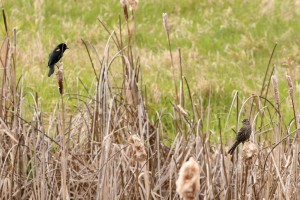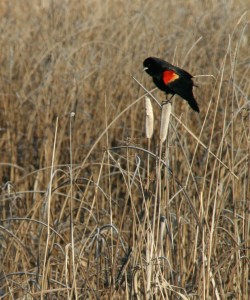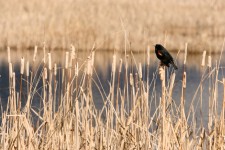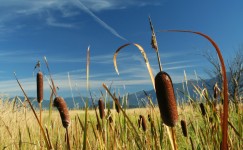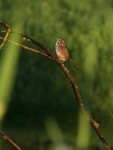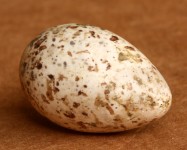One of the most abundant and well-known birds in North America is the red-winged blackbird. The descriptive name of the red-winged blackbird only applies to the male. The female looks remarkable like a sparrow with her drab brown coloring.
Typically male birds flaunt their brightly-colored feathers to attract females, but not red-winged blackbirds. The bright reddish-orange shoulder feathers (called epaulets or epaulettes) instead help the blackbird defend its territory.
In the military, an epaulet’s position, length, color and diameter on the bearer’s shoulder indicates the bearer’s rank. Similarly, the larger the blackbird’s epaulets, the more likely the blackbird will successfully defend its territory.
In studies, the epaulets of red-winged blackbirds were experimentally blackened and the males would subsequently lose their territory. However, black epaulets didn’t change the ability of the male to attract a female.
Male red-winged blackbirds don’t try to attract only one female, they defend a large enough territory to attract numerous females. Male red-winged blackbirds are polygynous, meaning they will form breeding partnerships simultaneously with more than one female. Only two percent of all bird species are polygynous.
By defending a large, high quality territory with its large epaulets, the male can average five female partnerships. Though studies have observed a male partnering with up to 15 females.
A high-quality territory is necessary for the male because he will feed the female while she incubates her three to five eggs. Incubation lasts 12 days on average and the nestlings fledge in two weeks. The short parenting time allows the female to have multiple broods each summer–up to three broods in some areas of the country.
The female will build a new nest from grasses, cattail reeds and rootlets for each brood. Construction takes three to six days.
With nests often built over water, the fledglings are able to swim for a short duration in case their first attempts to fly land them in the water. As they become proficient aviators, they lose their swimming ability.
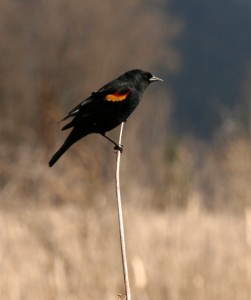
Males can hide their epaulets with black feathers which they sometimes do when going through another male’s territory
Fledglings, nestlings and eggs are the most prone to predators, despite their location over water. Predators include raccoons, skunks, crows, owls, hawks, foxes, weasels, raptors and snakes.
An unlikely predator for red-winged blackbirds are marsh wrens. Since marsh wrens and red-winged blackbirds share the same territory and food supply, they will eat each other’s eggs.
Both marsh wrens and red-winged blackbirds eat insects in the summer. Red-winged blackbirds feast on dragonflies, beetles, butterflies, moths and spiders. If the opportunity arises, they will also eat frogs, birds eggs (such as the marsh wren’s eggs), snails and worms.
When insects are not available, red-winged blackbirds head for grain fields. Large flocks of red-winged blackbirds gather in the fields to gorge on grain outside of the breeding season.
Between the abundant wetlands and grain fields across North America and the ability to produce up to three broods a year, the red-winged blackbird’s population is quite abundant–nearly 200 million strong across the continent.

